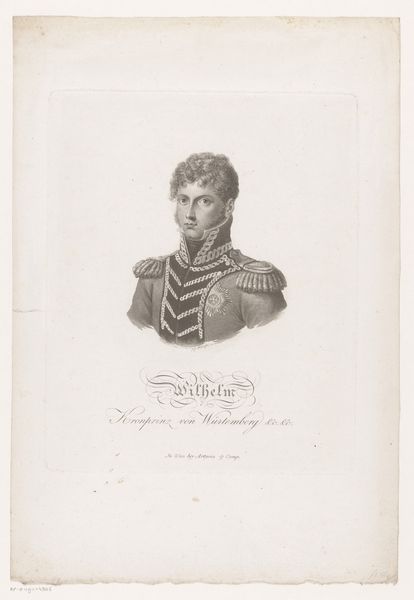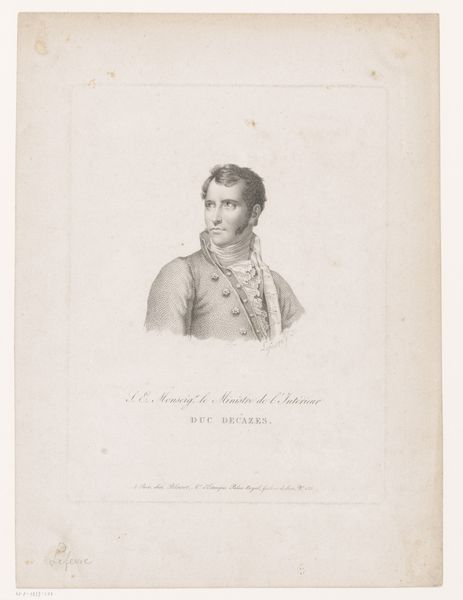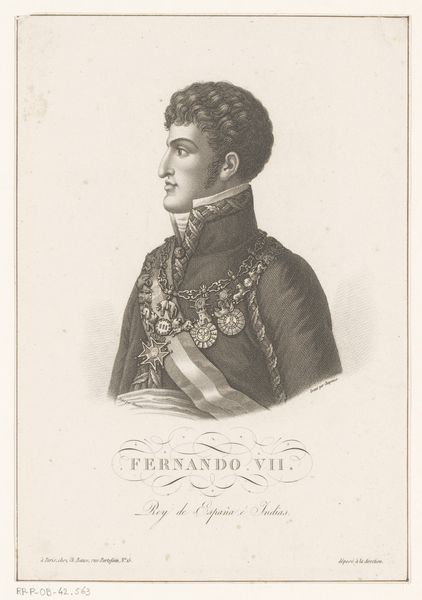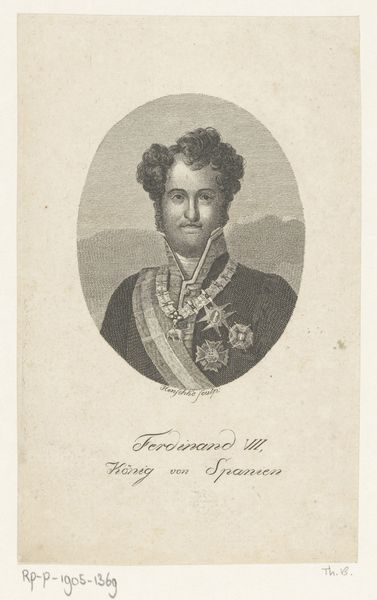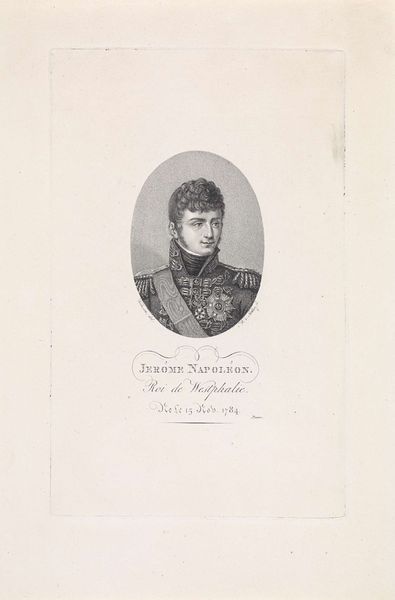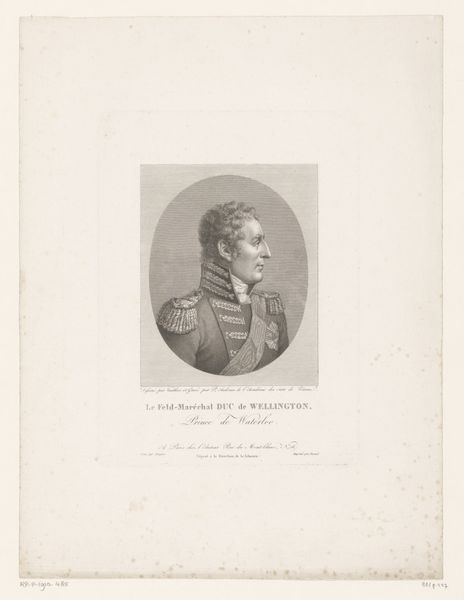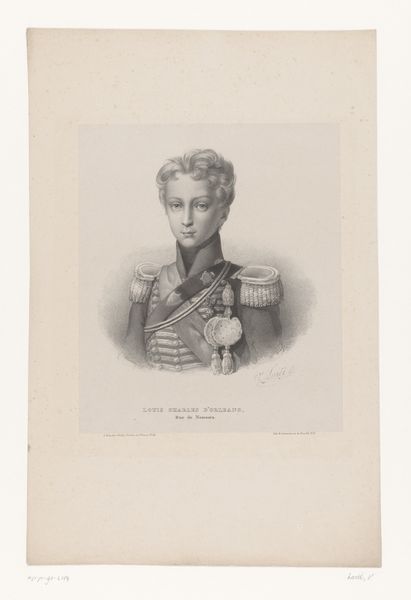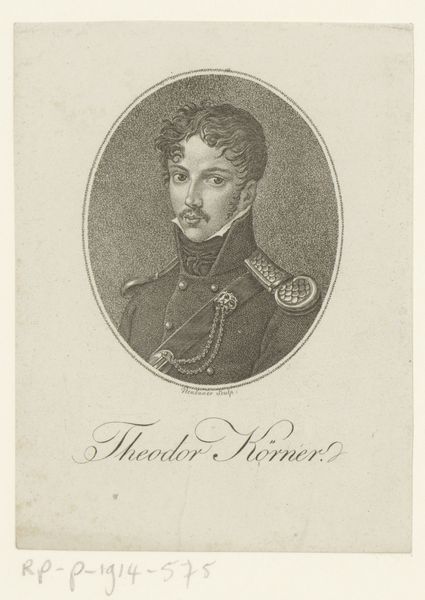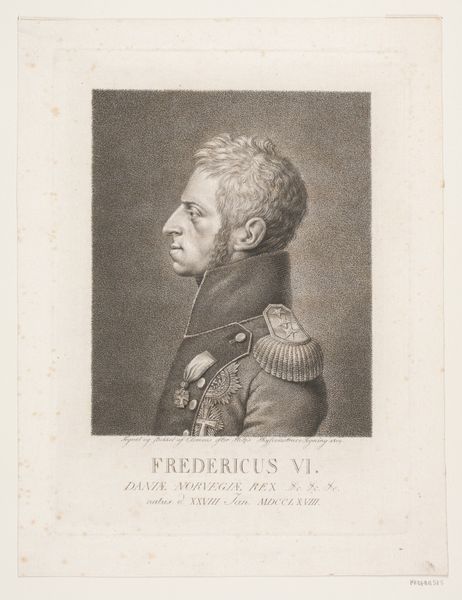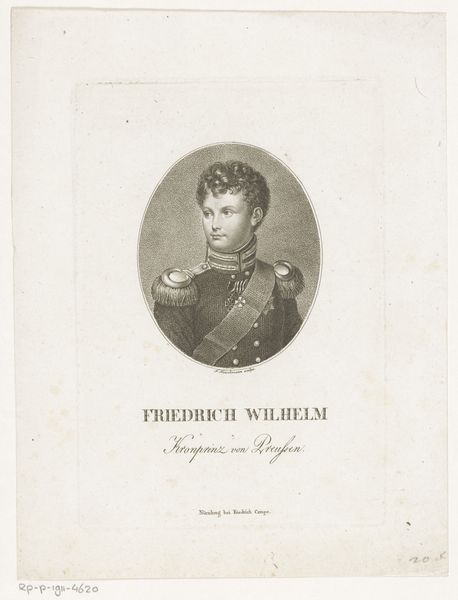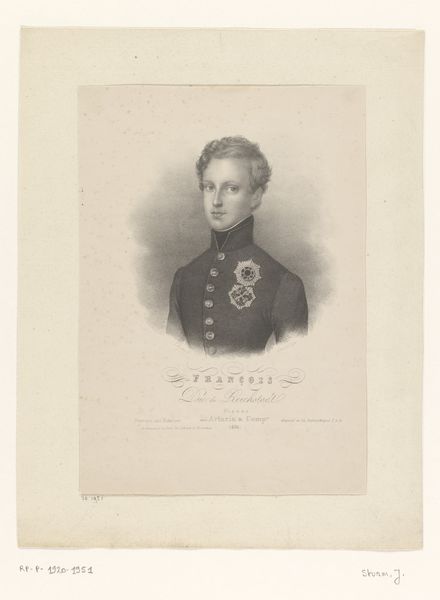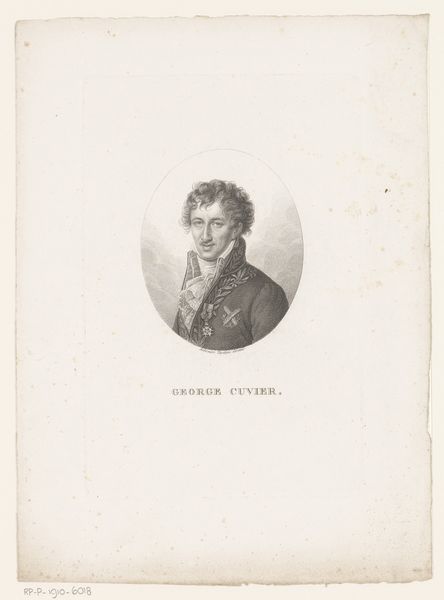
print, graphite
#
portrait
#
neoclacissism
# print
#
historical photography
#
graphite
#
history-painting
#
academic-art
Dimensions: height 307 mm, width 229 mm
Copyright: Rijks Museum: Open Domain
Editor: Here we have an intriguing graphite print, a portrait of Frederick William IV, King of Prussia, dating back to 1816 by Etienne Frédéric Lignon. He looks so young, almost idealized. What stands out to me is his determined gaze, despite the softness of the medium. What do you make of it? Curator: The power of symbols is strong here. Observe how Lignon presents the future king. The neoclassical style attempts to draw parallels with Roman emperors through his dress and adornments, though a distinct romantic sensibility is already starting to permeate the overall style. These visual cues subtly assert authority but, crucially, what emotions do they try to elicit? Editor: I see… it’s like he’s trying to legitimize his rule through historical and cultural association? To me, he seems distant from any type of romantic style: He does seem to project authority and seriousness. But in the clothing, it is not very solemn in my mind! Curator: Exactly. Notice how the almost excessively curly hair softens his features. Even the softness of the print acts like a mask, obscuring the harsh realities of political power. There’s a conscious effort to present an idealized figure, appealing to both reason and emotion. Why do you think that image was circulated through prints? Editor: Perhaps to disseminate that idealized image, make him recognizable and relatable to a wider audience. Something that seems true, if we think of a monarch with propaganda purposes! Curator: Precisely. It's an early form of mass media, shaping public perception through carefully constructed iconography. A window into the political strategies of the era, would you agree? Editor: I never considered prints as tools for shaping perceptions in that way. Now I see how the piece is a visual statement about power and authority, not just a pretty portrait. Thanks!
Comments
No comments
Be the first to comment and join the conversation on the ultimate creative platform.
